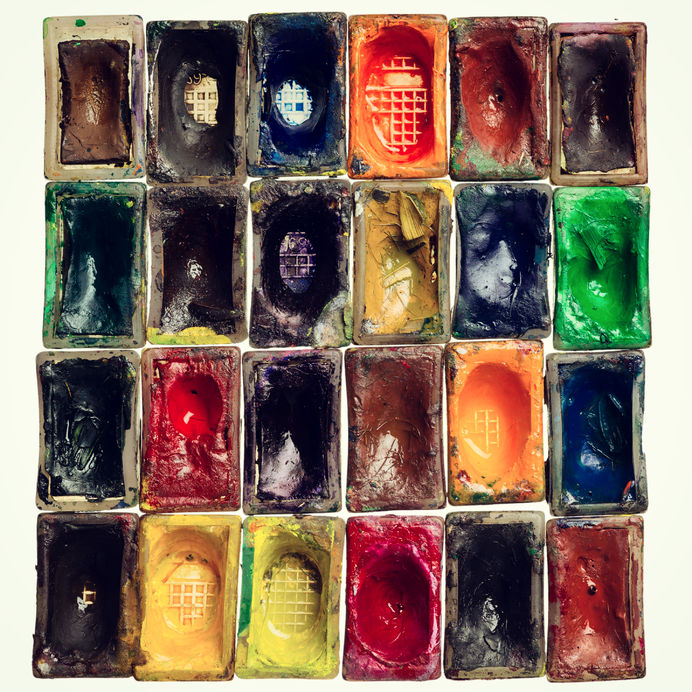References
Image Source: Paint Palette
?nquiry in Engaging Learning Environments. McIntosh, D. (2017). Home.
Retrieved from https://nquiry.us
American
Association of School Librarians (AASL). (2017). Standards for the 21 Century Learner. Retrieved from http://www.ala.org/aasl/standards/learning
American
Association of School Librarians (AASL). (2017). 21st Century Learning Standards and Common Core Standards
Crosswalk.
Retrieved from http://www.ala.org/aasl/standards/crosswalk
Authentic
Assessment Toolbox. Mueller, J. (2017). Welcome. Retrieved from http://jfmueller.faculty.noctrl.edu/toolbox/index.htm
Behavioral
Change Models. (2017). Diffusion of Innovation Theory. Retrieved from
http://sphweb.bumc.bu.edu/otlt/MPH-Modules/SB/BehavioralChangeTheories/BehavioralChangeTheories4.html
Brooks,
J.G., & Brooks, M.G. (1999). In Search of Understanding: The Case for
Constructivist Classrooms. Alexandria: Va.: Association for Supervision and
Curriculum Development
Buck
Institute for Education (BIE). (2017). Why
Project-based Learning? (PBL). Retrieved from http://www.bie.org/
Cannon Design, VS Furniture & Bruce Mau Design. (2010). The Third Teacher: 79 Ways You Can Use Design to Transform
Teaching and Learning. NY: Abrams
Collaborative
for Academic, Social and Emotional Learning (CASEL). (2017). What is SEL?. Retrieved from http://www.casel.org/what-is-sel/
Common
Core State Standards Initiative. (2017). Read the Standards. Retrieved from http://www.corestandards.org/read-the-standards/
Concept
to Classroom. (2017). Constructivism as a
Paradigm for Teaching and Learning. Retrieved from http://www.thirteen.org/edonline/concept2class/constructivism/index.html
Concept
to Classroom. (2017). Inquiry-based
Learning. Retrieved http://www.thirteen.org/edonline/concept2class/inquiry/
Dooley,
S. & Witthoft, S. (2012). make space:
How to Set the Stage for Creative Collaboration. Hoboken: NJ.: John Wiley
& Sons, Inc.
Edutopia.
(2017). Core Strategies for Innovation and Reform in Learning. Retrieved
from https://www.edutopia.org/core-concepts
Edutopia. (2017). Grant Wiggins:
Defining Assessment. Retrieved from https://www.edutopia.org/grant-wiggins-assessment
Edutopia. (2017). Inquiry-Based
Learning. Retrieved from
https://www.edutopia.org/topic/inquiry-based-learning
Edutopia.
(2017). Integrated Studies. Retrieved from https://www.edutopia.org/integrated-studies
Edutopia.
(2017). Project-Based Learning. Retrieved from
https://www.edutopia.org/project-based-learning
Edutopia.
(2017). Social and Emotional Learning. Retrieved from https://www.edutopia.org/social-emotional-learning
Edutopia.
(2017). What is Authentic Assessment. Retrieved
from https://www.edutopia.org/stw-assessment-school-of-the-future-introduction-video
From Now On. McKensie, J. (2017). A Questioning Toolkit. Retrieved from http://fno.org/nov97/toolkit.html
Google.com.
(2017). Google Docs - Create and edit documents online, for free. Retrieved
from https://www.google.com/docs/about/
Graham,
P. & Ferriter, W.F. (2010). Building
a Professional Learning Community: A Guide to the First Year. Bloominton:
In.: Solution Tree Press
Groupwerk.
McIntosh, D. (2018). An Integrated
Studies Framework. Retrieved from
https://groupwerk.net/integratedstudies.php
Groupwerk.
McIntosh, D. (2018). Crafting Engaging
Learning Environments. Retrieved from https://groupwerk.net/engaging.php
Groupwerk.
McIntosh, D. (2018). Flexible Physical
Space Design. Retrieved from https://groupwerk.net/physicalspacedesign.php
International
Baccalaureate. (2017). IB Learner Profile.
Retrieved from http://www.ibo.org/benefits/learner-profile/
ISTE.
(2017). ISTE Standards for Students. Retrieved from http://www.iste.org/standards/for-students
Jacobs,
H.H. (1997). Mapping The Big Picture. Alexandria: Va.: Association for
Supervision and Curriculum Development
Martinez,
S.L., & Stager, G. (2013). Invent to
Learn: Making, Tinkering, and Engineering in the Classroom. Torrance: Ca.: Constructing
Modern Knowledge Press
Monday
Monday Music. McIntosh, D. (2017). Transcendental
Good Morning. Retrieved from https://mondaymondaymusic.blogspot.com/2016/07/transcendental-good-morning.html
Nair,
P. (2014). Blueprint for Tomorrow:
Redesigning Schools for Student-Centered Learning. Cambridge: Ma.: Harvard
Education Press
National
Center on Universal Design for Learning. (2017). About UDL. Retrieved from http://www.udlcenter.org/aboutudl
Next Generation Science Standards:
For States by States. (2017). Crosscutting Concepts – NGSS Appendix G.
Retrieved from https://www.nextgenscience.org/sites/default/files/Appendix%20G%20-%20Crosscutting%20Concepts%20FINAL%20edited%204.10.13.pdf
Next Generation Science Standards:
For States by States. (2017). Get to Know the Standards. Retrieved from http://www.nextgenscience.org/get-to-know
Next Generation Science Standards: For
States by States. (2017). Next Generation Science Standards. Retrieved
from https://www.nextgenscience.org/
Next
Generation Science Standards: For States by States. (2017). Three Dimensional Learning Framework.
Retrieved from http://www.nextgenscience.org/three-dimensions
Oblinger D.G., Editor. (2006). Learning Spaces. Educause
P21:
Partnership for 21st Century Learning. (2017). Framework for 21st Century Learning. Retrieved from http://www.p21.org/about-us/p21-framework
Papert,
S. & Harel, I. (1991). Situating Constructionism. Retrieved from
http://www.papert.org/articles/SituatingConstructionism.html
ResearchGate.
(2017). Diffusion of Innovation adoption status. Figure 2 of 8.
Retrieved from
https://www.researchgate.net/figure/51852494_fig2_Figure-2-Diffusion-of-Innovation-adoption-status-The-typical-distribution-of-categories
The
Institute for Habits of Mind. Costa, A. & Kallick, B. (2017). About Us. Retreived from http://www.habitsofmindinstitute.org/about-us/us/
TPACK
ORG. Koehler, M. (2017) TPACK Explained.
Retrieved from http://matt-koehler.com/tpack2/tpack-explained/
Washington
Elementary STEAM Magnet Curriculum. (2017). Home. Retrieved from http://www.washingtonsteam.com/
Wikipedia.org.
(2017). Authentic assessment. Retrieved from https://en.wikipedia.org/wiki/Authentic_assessment
Wikipedia.org.
(2017). Constructionism (learning theory). Retrieved from https://en.wikipedia.org/wiki/Constructionism_(learning_theory)
Wikipedia.org.
(2017). Maker Culture. Retrieved from https://en.wikipedia.org/wiki/Maker_culture
Works by Seymour Papert, Ph.D. (2017). Constructionism vs.
Instructionism. Part 1: Teaching vs. Learning. Retrieved from
http://www.papert.org/articles/const_inst/const_inst1.html.
Works by Seymour Papert, Ph.D. (2017). Papert on Piaget By
Seymour Papert. A version of this article appeared in Time magazine’s special
issue on "The Century’s Greatest Minds," page 105, March 29, 1999. Retrieved
from http://www.papert.org/articles/Papertonpiaget.html



